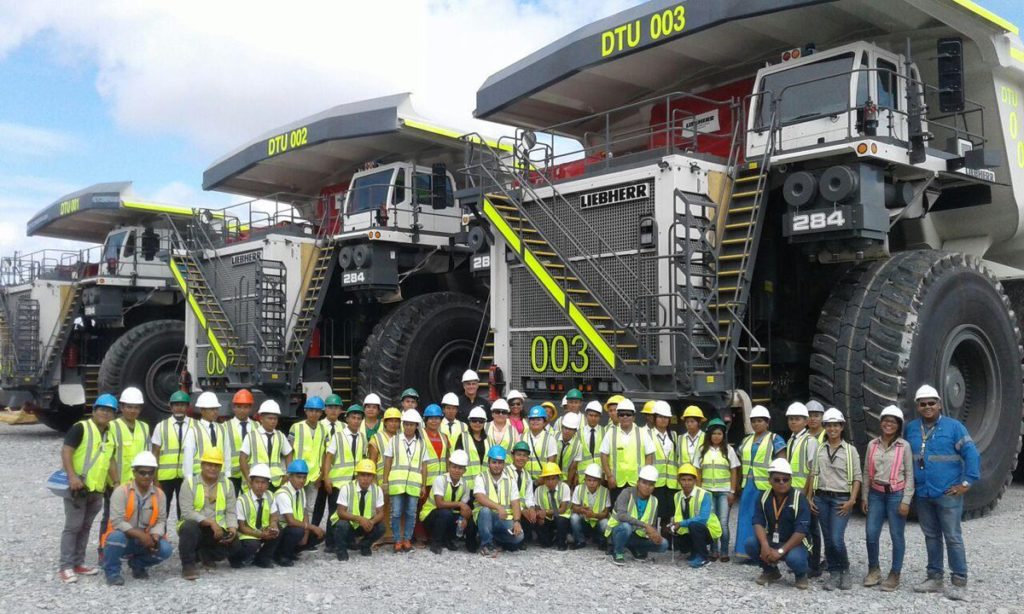According to mining equipment research house The Parker Bay Company, the market for large-scale surface mining equipment continues the recovery/expansion that began in the second half of 2016, but the gains recorded in Q2 2018 slowed substantially from the earlier pace when the markets were recovering from the four-year-long contraction that brought shipments down more than 80% from the levels achieved at the peak of the mining ‘super-cycle.’ On a year-over-year basis, deliveries of trucks, excavating/loading equipment and related mobile mining equipment recorded a 33% gain.
This is documented in Parker Bay’s Mobile Mining Equipment Database which contains shipments data reported directly to Parker Bay by the manufacturers of these machines. Their latest reports indicate a 7% increase in the number of machines delivered over Q1 2018, but virtually no change in the value of these shipments that totalled nearly $1.8 billion. When combined with the gains recorded over the previous three quarters, the value of machines delivered was nearly 30% higher than Q2 2017 and +150% above the nadir reached in Q2 2016. “As impressive as this two-year recovery has been, equipment markets are still only half the levels achieved during early 2012” – the peak of the ‘super-cycle.’
“The divergence of units and value stems largely from the product mix with most Q2 increases recorded for smaller dozers, drills and graders. In contrast, truck deliveries (which account for the majority of units and value shipped) increases by less than 1%. By size-class, truck shipments continue to be skewed toward the smaller units with 90 to 150 t payloads accounting for over 60% of Q2 capacity shipped while ultra-class trucks (290 t+) accounted for just 16%. Because average age (service life) of these ultra-trucks is generally ‘younger’ and thus requiring relatively fewer units for replacement, the ultra-class demand is more dependent on the development and expansion of world-class mines, something that has scantly materialised during the current expansion cycle.”
“Shipments of excavating/loading equipment paired with these trucks have lagged the increases in truck shipments until recently. Q2 shipments increased by 11% (and 23% year-over-year) with hydraulic shovels/excavators accounting for the preponderance of these increases. Mirroring the demand for smaller rather than larger trucks, excavators in the 20-50 t payload range accounted for 80% of Q2 shipments; larger capacity units (63 t+ payload), just 20%. Crawler and wheel dozer deliveries surged in Q2 (+37%), perhaps reflecting declining availability of newer used machines.”
“The geographic distribution of Q2 shipments reflects strong demand from Australasia and Russia/CIS that has characterised the two-year recovery/expansion. Russian mines and contractors accounted for 25% of all Q2 deliveries, Indonesia 26%. While below historical market share, Australian shipments increased to 8% of the global total vs just 4% in Q2 2017. But growth in these two regions slowed to single-digits in Q2 vs. Q1. In contrast, shipments to mines in Africa and Latin America were substantially higher. Lagging far behind were shipments to mines in North America and Asia with deliveries falling not only below Q1 but substantially lower than prior year levels. At some point in this expansion cycle, the largest-scale mines in established mining markets (US, Canada, Brazil, Chile, RSA) will no longer be able to delay replacement and shipments may well surge above current levels. But for now, many of these operations are able to postpone such commitments or are able to fulfill them by relocating used machines (eg Grasberg trucks to Cerro Verde). Additionally, Parker Bay has noted several world-class projects advancing. Some have already ordered and begun receiving large numbers of machines (eg Cobre Panama). But many others are still awaiting final decisions to proceed and then place large orders. This segment of equipment demand is expected to drive the overall equipment market higher in the next year or two.”
“The distribution by mineral sectors shifted, to a degree, away from coal and gold with copper and iron mines assuming a greater share of Q2 deliveries. However, the gains in the latter were relatively modest and do not yet reflect major investments in new or expanding capacity among these very large-scale operations. Coal remains the largest single mineral sector, but its share has cropped from over 60% in Q2 2017 to just under 50%. Russian and Indonesian coal miners and contractors accounted for 43% and 22% of all coal mine shipments but the totals for each sector declined Q2/Q1. While orders and shipments to Australian coal miners have increased in the first half of 2018, demand from other large coal producing countries, notably the US, remain severely depressed.”
“Equipment delivered to the three major metal markets (copper, gold, iron) accounted for nearly 40% of total shipments compared to just 27% in Q2 2017. Assuming market conditions and prices for all three minerals remain well above the bottoms reached several years ago, demand from these sectors is expected to increase going forward. Despite the more favorable oil market conditions and pricing, oil sands producers have not yet stepped up their purchases of the largest-scale machines that dominate this sector. With large orders placed for autonomous-drive ultra-class trucks and an ageing fleet of the first-generation trucks, shipments to this mineral segment are expected to increase rapidly in the year ahead.”
“Shipments to other mineral segments continue to track modestly above historical levels: 10-11% vs approx 8% of the active population. However, despite high-profile news for certain minerals in this category (lithium, nickel, cobalt), Parker Bay does not envision equipment demand, by individual mineral or collectively, to account for more than a percentage point or two for the foreseeable future.”











